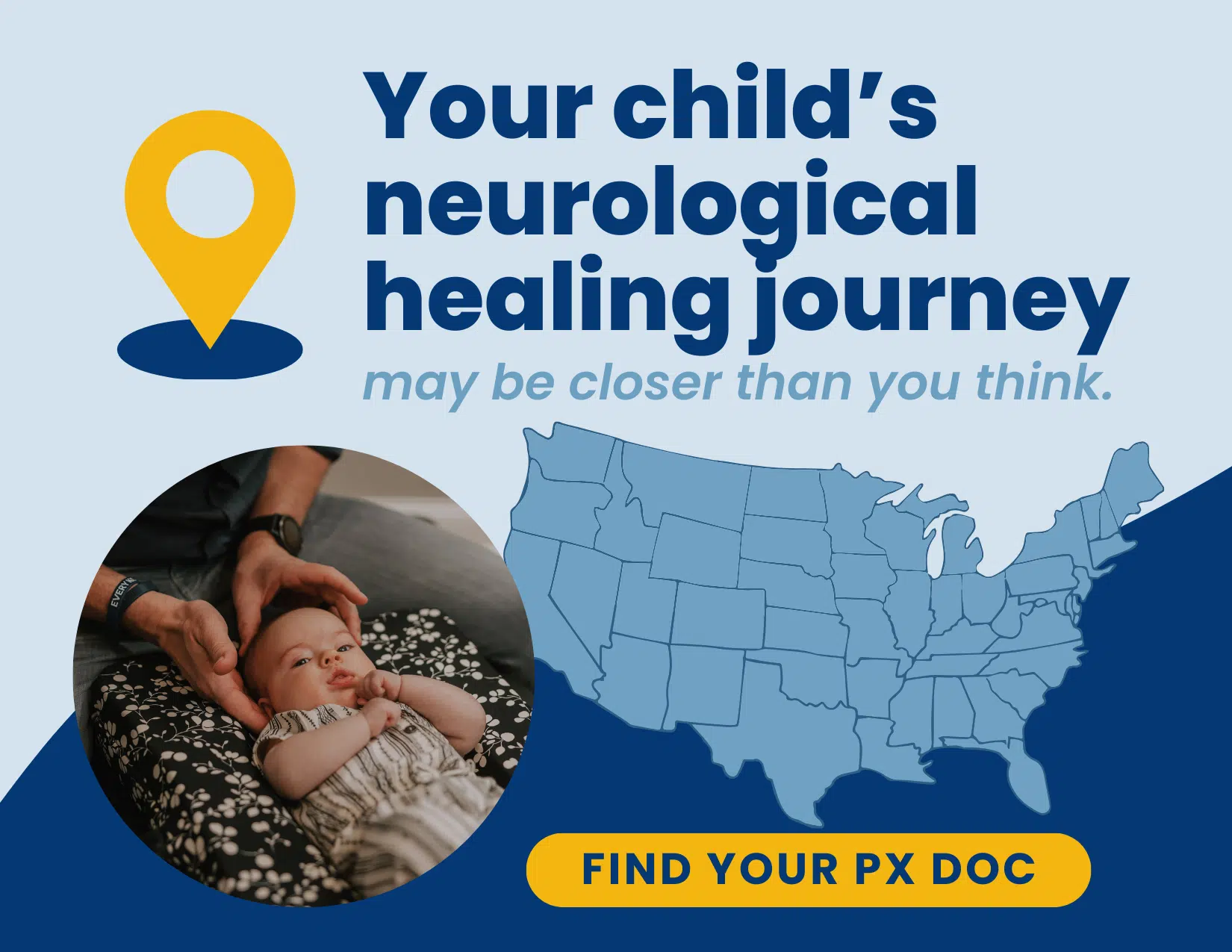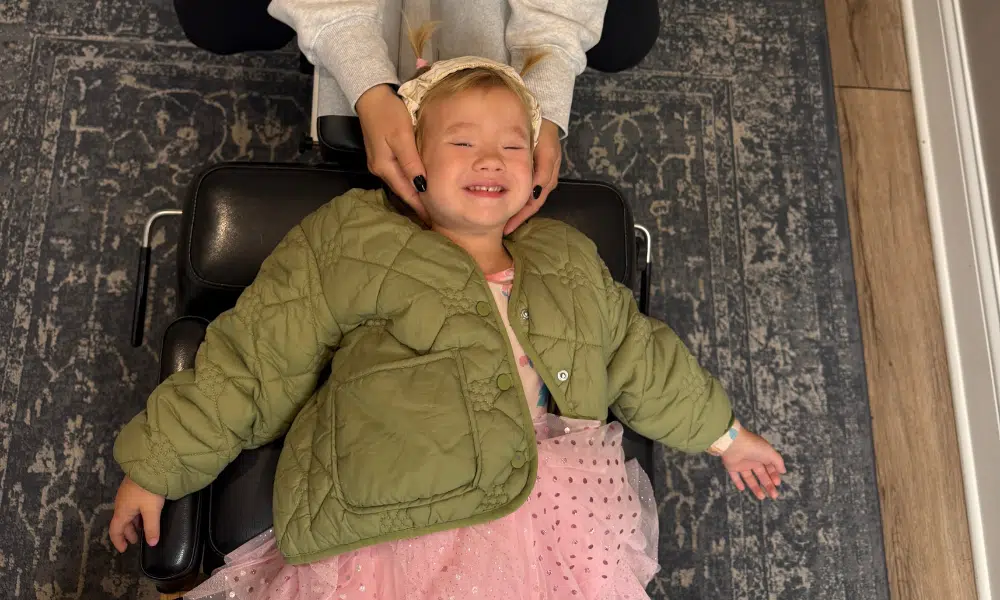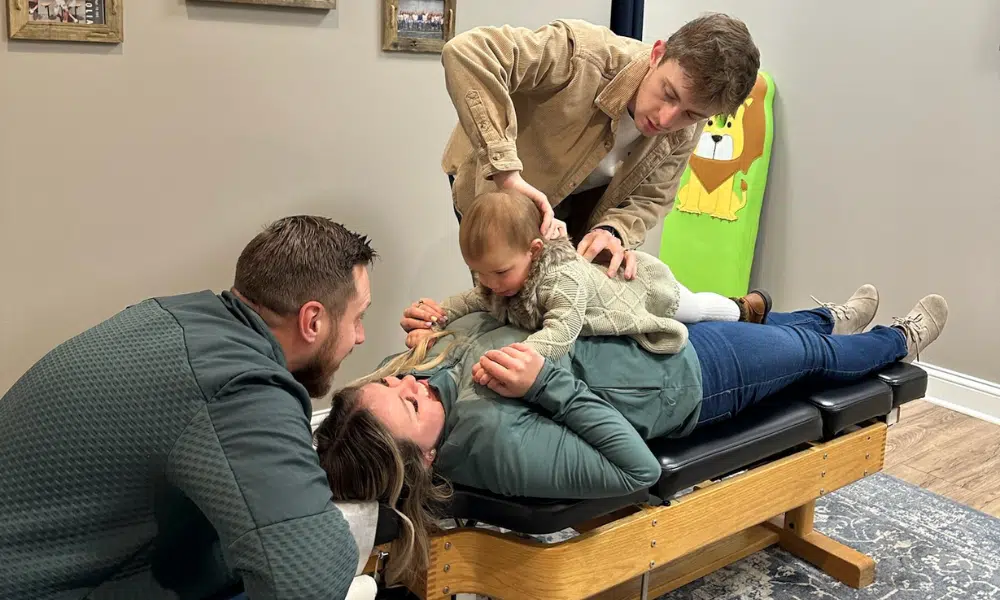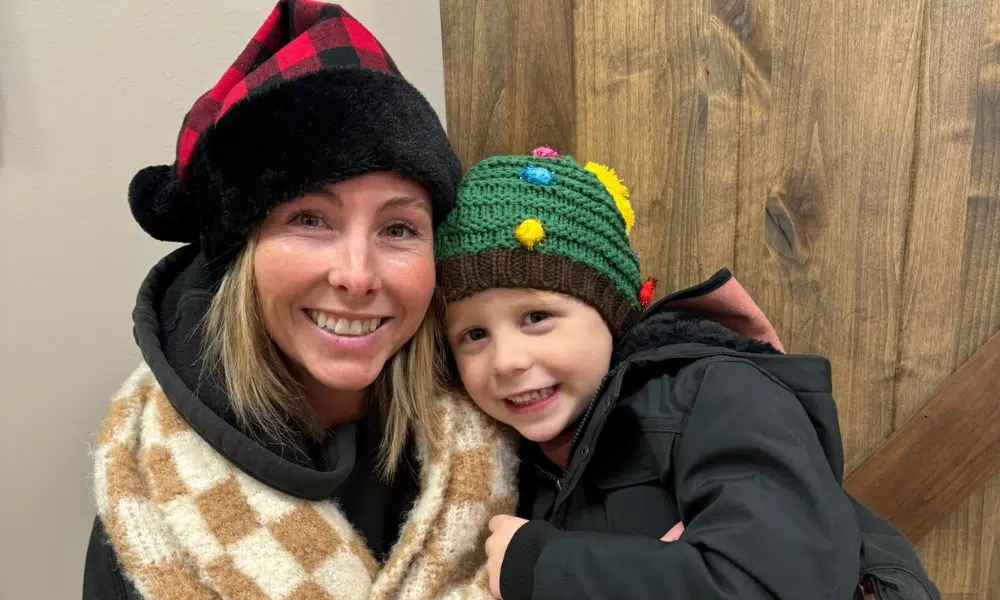As a parent, watching your once lively and cheerful child transform into an anxious, struggling kid is heartbreaking beyond words. Despite your best efforts to find answers from doctors, therapists, and specialists, you feel like nothing helps provide any real improvement. The signs ranging from attention deficits to chronic digestive issues to sensory overloads continue while providers offer little beyond medications aimed at suppressing these problems.
You’re not alone in this struggle. According to a recent study, an alarming 40% of children suffer from at least one chronic health condition. This includes digestive conditions, respiratory challenges, or neurological conditions like ADHD and anxiety. This unprecedented epidemic of poor health in our children is leaving countless parents feeling hopeless and desperate for answers.
But what if there was a common thread underlying many of these seemingly unrelated conditions? A root cause that, when addressed, could unlock your child’s innate potential for healing and thriving? That missing piece of the puzzle is often the parasympathetic nervous system and vagus nerve dysfunction—a critical factor that is often entirely overlooked by conventional medicine.
We will explore the parasympathetic nervous system and its significant influence on your child’s health and well-being. We will examine the crucial role of the vagus nerve, the factors that may lead to its dysfunction, and, most importantly, how our unique approach to Neurologically-Focused Chiropractic Care can help restore balance and promote lasting, drug-free healing.
Understanding the Parasympathetic Nervous System
The parasympathetic nervous system (PNS) is one of the two main divisions of the Autonomic Nervous System (ANS), which controls involuntary bodily functions. The PNS is responsible for the body’s “rest, regulate, and digest” response, promoting relaxation, conserving energy, and regulating crucial functions like digestion, heart rate, and breathing.
The Counter Balance of the Autonomic Nervous System
To understand the parasympathetic nervous system, it’s essential to know its counterpart: the sympathetic nervous system (SNS). The SNS governs the body’s “fight or flight” response, which prepares the body to react to stressful situations or perceived threats. When the SNS is activated, it increases heart rate, blood pressure, and breathing rate, while diverting blood flow away from the digestive system to the muscles.
In contrast, the parasympathetic nervous system has the opposite effect. It slows down the heart rate, lowers blood pressure, and promotes digestion and nutrient absorption. The PNS is responsible for bringing the body back to a state of calm and relaxation after a stressful event. In short, the Parasympathetic Nervous System is primarily responsible for nervous system regulation, and the vagus nerve is a key player in that overall function.
The Importance of Parasympathetic Nervous System Balance
A well-functioning parasympathetic nervous system is essential for maintaining overall health and well-being. When the PNS is in balance with the sympathetic nervous system, it helps the body recover from stress, promotes restful sleep, supports healthy digestion, and fosters a sense of calm and relaxation.
However, when the parasympathetic nervous system is not functioning optimally, it can lead to a wide range of health issues, such as anxiety, digestive problems, sleep disturbances, and chronic inflammation. In the next section, we’ll explore the factors that can contribute to parasympathetic nervous system dysregulation and how it can impact your child’s health.
The Vagus Nerve: The Key Player in the Parasympathetic Nervous System
The vagus nerve is the longest and most complex of the cranial nerves. It is a critical component of the parasympathetic nervous system, connecting the brain to various organs throughout the body.
Anatomy and Function of the Vagus Nerve
The vagus nerve originates in the brainstem and extends through the neck, chest, and abdomen, innervating various organs along the way. It is composed of both sensory and motor fibers, allowing for bidirectional communication between the brain and the body. More than 75% of parasympathetic nerve fibers are carried by the vagus nerve pathways.
The vagus nerve’s main functions include:
- Regulating heart rate and blood pressure
- Controlling digestive processes, such as peristalsis and enzyme secretion
- Modulating respiratory rate and depth
- Influencing immune response and inflammation
- Facilitating communication between the gut and the brain (the gut-brain axis)
The Importance of Vagal Tone
Vagal tone refers to the strength and efficiency of the vagus nerve in regulating various bodily functions. A high vagal tone is associated with better cardiovascular health, resilience to stress, and improved cognitive performance. On the other hand, low vagal tone has been linked to a range of health issues, including:
- Anxiety and Depression: Low vagal tone is linked to anxiety and depression, as it affects emotional regulation by interacting with key brain areas responsible for managing stress and mood.
- Chronic Inflammation: A poorly functioning vagus nerve may result in chronic inflammation since it plays a central role in dampening the immune response.
- Cardiovascular Problems: Reduced vagal tone can impact heart rate and blood pressure regulation, leading to a higher risk of cardiovascular issues like irregular heartbeats and hypertension.
- Sleep Disturbances: Low vagal tone can disrupt restful sleep, as it affects the body’s ability to relax through the parasympathetic nervous system.
- Digestive Conditions: Research links low vagal tone to conditions like Irritable Bowel Syndrome (IBS) because the vagus nerve helps regulate gut motility and balance gut bacteria, impacting digestion.
Maintaining a healthy vagal tone is essential for promoting the proper functioning of the parasympathetic nervous system and supporting overall well-being. Factors that can negatively impact vagal tone include chronic stress, poor diet, lack of exercise, and exposure to environmental toxins.
The Vagus Nerve and the Gut-Brain Axis
The vagus nerve plays a crucial role in the gut-brain axis, the bidirectional communication pathway between the central nervous system and the gastrointestinal tract. This connection is essential for regulating digestive processes, modulating immune function, and influencing mood and behavior.
Dysfunction of the vagus nerve can lead to a range of gut-related issues, such as:
- Delayed gastric emptying (gastroparesis)
- Increased intestinal permeability (leaky gut)
- Altered gut motility
- Imbalanced gut microbiome
These gut-related issues can, in turn, contribute to the development or exacerbation of various health problems, including nutrient deficiencies, autoimmune disorders, and neurological conditions like Autism and ADHD.
By understanding the crucial role of the vagus nerve in maintaining parasympathetic nervous system balance and supporting the gut-brain axis, we can begin to appreciate its far-reaching impact on overall health and well-being.
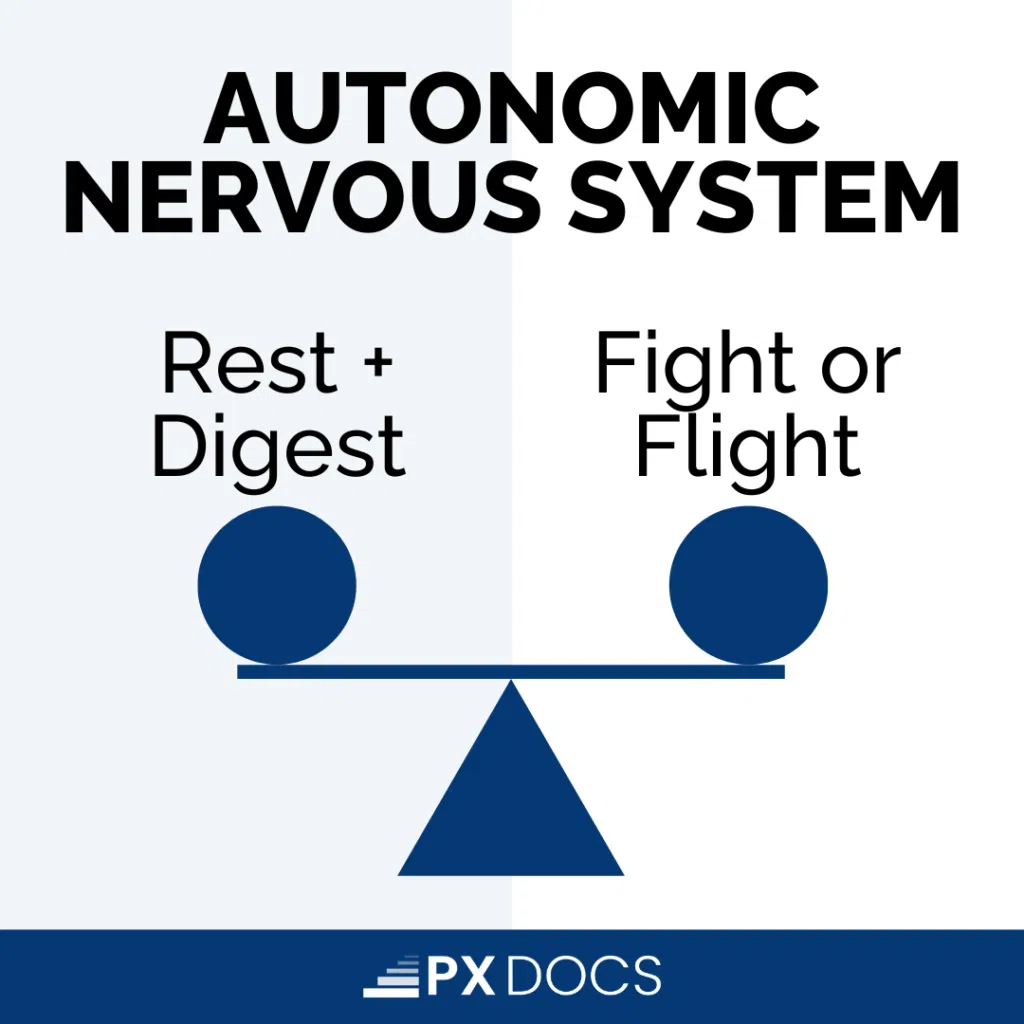
Parasympathetic Nervous System Dysfunction: Causes and Consequences
When the delicate balance of the parasympathetic nervous system is disrupted, it can lead to a wide range of health issues that affect children’s physical, mental, and emotional well-being. We’ll explore the factors that contribute to parasympathetic nervous system dysfunction and the potential consequences for your child’s health.
The “Perfect Storm” Model
At PX Docs, we often refer to the combination of factors that can lead to parasympathetic nervous system dysfunction as the “Perfect Storm.” This concept describes how a series of events and stressors, often beginning early in life, can create a cascading effect that disrupts the normal development and function of the nervous system.
The key components of the “Perfect Storm” include:
- Fertility challenges and maternal prenatal stress: Hormonal imbalances, nutritional deficiencies, and emotional stress during pregnancy can impact the developing fetus’s nervous system, setting the stage for future imbalances.
- Birth trauma and interventions: Procedures such as C-sections, forceps deliveries, and vacuum extractions can cause physical stress and trauma to the infant’s delicate nervous system, leading to subluxations and altered neurological function.
- Infant gut dysfunction and disruption of the microbiome: Early exposure to antibiotics, formula feeding, and environmental toxins can disrupt the development of a healthy gut microbiome, which is essential for proper nervous system function and overall health.
- Altered and delayed motor development: Skipped or delayed motor milestones, such as crawling and walking, can impact the proper development of the nervous system and contribute to ongoing imbalances.
When these factors combine, they can create a vicious cycle of health challenges.
Health Conditions Related to Parasympathetic Nervous System Imbalances
Parasympathetic nervous system dysfunction can manifest in various ways, contributing to the development or exacerbation of numerous health conditions, including:
- Digestive conditions: Irritable bowel syndrome (IBS), gastroesophageal reflux disease (GERD), constipation, and diarrhea
- Anxiety and mood conditions: Generalized anxiety, panic attacks, depression, and mood swings
- Sleep disturbances: Insomnia, night terrors, and irregular sleep patterns
- Immune dysfunction and chronic inflammation: Recurrent infections, autoimmune disorders, and allergies
- Neurodevelopmental conditions: Autism Spectrum Disorders (ASD), Attention-Deficit/Hyperactivity Disorder (ADHD), and Sensory Processing Disorder (SPD)
These health issues can have a profound impact on a child’s quality of life, affecting their ability to learn, socialize, and thrive. By understanding the underlying role of parasympathetic nervous system dysfunction in these conditions, we can begin to develop targeted, effective approaches to support healing and restore balance.
The Role of Subluxation and Dysautonomia
Two key factors that perpetuate parasympathetic nervous system dysfunction are subluxation and dysautonomia. Subluxation refers to disruptions and dysregulation within the nervous system that interfere with proper communication between the brain and the body. This interference can disrupt the normal function of the parasympathetic nervous system, leading to a state of chronic stress and imbalance.
Dysautonomia, on the other hand, describes an imbalance between the sympathetic and parasympathetic branches of the autonomic nervous system. When the sympathetic nervous system becomes overactive, and the parasympathetic nervous system becomes underactive, it can lead to a wide range of signs and health issues.
By addressing subluxation and dysautonomia through targeted interventions, such as Neurologically-Focused Chiropractic Care, we can help restore balance to the parasympathetic nervous system and support the body’s natural healing processes.
Identifying Parasympathetic Nervous System Issues
Identifying parasympathetic nervous system dysfunction can be challenging, as signs often mimic those of other health conditions. However, advances in diagnostic technology have made it possible to assess the function of the nervous system with greater precision and accuracy. At PX Docs, we utilize state-of-the-art INSiGHT scans to detect subluxations and dysautonomia, providing a clear picture of your child’s neurological health.
The Role of INSiGHT Scans in Identifying Subluxation and Dysautonomia
INSiGHT scans are non-invasive, painless diagnostic tests that measure the function of the autonomic nervous system, including the parasympathetic and sympathetic branches. These scans provide valuable information about the presence of subluxations and dysautonomia, allowing our doctors to create personalized care plans tailored to your child’s unique needs.
The INSiGHT scanning process involves:
- Heart Rate Variability (HRV) Analysis: Measures the balance between the parasympathetic and sympathetic nervous systems, providing insights into overall autonomic function and resilience to stress.
- Surface Electromyography (sEMG): Assesses the electrical activity of muscles and sensory system, helping to identify areas of tension and imbalance that may be contributing to subluxations and nervous system dysregulation.
- Thermal Scanning: Detects temperature asymmetries throughout the neurospinal system, which can indicate areas of inflammation and regional dysautonomia.
By combining the data from these scans, our doctors can pinpoint the specific areas of the nervous system that require attention and develop targeted care plans to address the root causes of your child’s health issues.
The Benefits of Restoring Parasympathetic Nervous System Function
Restoring proper parasympathetic nervous system function through Neurologically-Focused Chiropractic Care can have a profound impact on your child’s health and well-being. Some of the potential benefits include:
- Improved digestion and gut health
- Better sleep quality and more regular sleep patterns
- Enhanced immune function and resilience to stress
- Reduced inflammation and risk of chronic health issues
- Improved mood, emotional regulation, and behavior
- Increased focus, attention, and cognitive function
- Greater overall sense of calm and well-being
By supporting the body’s natural ability to heal and regulate itself, Neurologically-Focused Chiropractic Care can help your child overcome the challenges associated with parasympathetic nervous system dysfunction and thrive in all aspects of their life.
Unlocking Your Child’s Potential: The Power of Neurologically-Focused Care
As a parent, you want nothing more than to see your child healthy, happy, and thriving. By understanding the critical role of the parasympathetic nervous system in overall health and well-being, and seeking the care of a qualified healthcare provider, you can help your child overcome the challenges associated with nervous system dysfunction and unlock their full potential.
We are committed to providing the highest quality, Neurologically-Focused Care to support your child’s health and development. Our doctors are specially trained to identify and address the root causes of parasympathetic nervous system dysfunction, using safe, gentle, and effective techniques that promote healing and balance.
If you suspect that your child may be struggling with the effects of parasympathetic nervous system dysfunction, we encourage you to visit the PX Docs Directory to find a qualified practitioner near you.
With the right care and support, your child can experience the life-changing benefits of a balanced, healthy nervous system and enjoy a brighter, more vibrant future.


